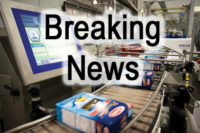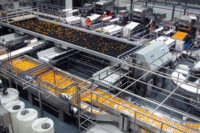Food safety testing market worth $15 billion by 2019

The food safety testing market is projected to reach $15.04 billion and a volume of 1.16 billion tests by 2019, according to market researcher MarketsandMarkets.
Food safety systems strive to minimize contamination in finished food products and also in the environment where the food is produced. “For certain types of products, particularly ready-to-eat products, it is critical that environmental pathogens be easily controlled through environmental pathogen monitoring so that they do not contaminate the product,” researchers at MarketsandMarkets said.
The food safety testing market is well-established in Europe and North America, but is beginning to emerge in markets like Latin America, Africa and Asia-Pacific. Researchers indicate this growth is possible due to increases in international food trade, consumer awareness of contamination, outbreaks of food poisoning and unexplored potential in emerging countries. China and India are identified as being big opportunities for the food safety testing market.
Leading players in the food safety testing market identified by the report include: SGS S.A. (Switzerland), Intertek Group Plc. (UK), Eurofins Scientific (Luxembourg), Silliker, Inc. (US), Lloyd’s Register Quality Assurance Ltd. (UK), and Bureau Veritas S.A. (France).
North America was the largest market for food safety testing, while Asia-Pacific is projected to be the fastest-growing market during the review period. Researchers say the implementation of the Food Safety Modernization Act (FSMA) in the US and an extended food safety action plan implemented in China are attractive opportunities for growth in the food safety testing market.
Testing for pathogens represented the biggest chunk of the food testing market in 2013. According to researchers increasing foodborne diseases related to Salmonella also attributed to the growth of the food safety testing market for pathogens. Increasing food contamination and the outbreak of shiga toxin-producing E. coli (STEC) poisoning have resulted in an increase in the frequency of E. coli testing in the global food testing market.
The full report can be found here.
Looking for a reprint of this article?
From high-res PDFs to custom plaques, order your copy today!







